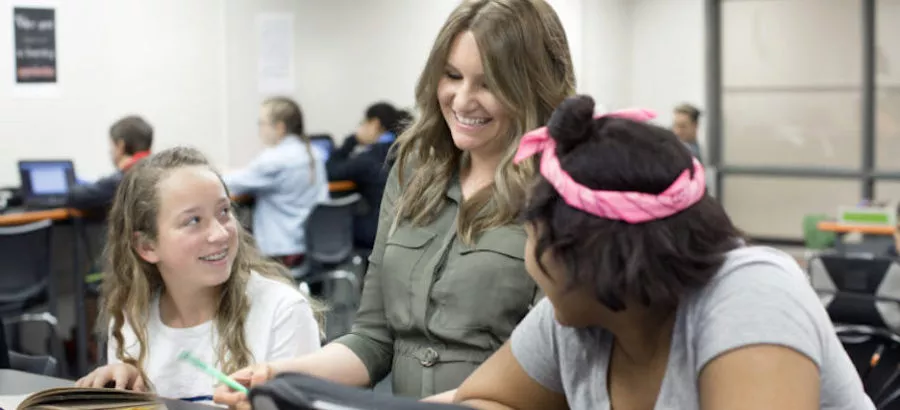We all want to make learning more meaningful and authentic, One way to do that is by connecting learning to the world beyond school. The easiest way to do that is by bringing yourself—your personality and your interests—into the classroom.
That’s right. In addition to differentiating our students, it’s also vital that we differentiate ourselves as we work to increase the level of student engagement.
My recent nationwide student engagement survey of sixth through twelfth graders revealed that students are engaged by nine different categories of strategies. One of the most frequently mentioned results was for teachers to “be more human.” This teases apart into different sub-categories:
• Teachers’ enthusiasm for subject area and students;
• A teacher’s ability to share humor and personal stories; and
• The ability to comfortably share personal failures and how the teacher
bounced back.
In a recent study of almost 400 students and their 25 teachers published in the Journal of Educational Psychology, the control groups of teachers and students were given information about five similarities they shared.
Merely knowing about those similarities was acknowledged as something that helps to strengthen their relationships, in particular “between teachers and their “underserved” students.” As a result, “This brief intervention appears to close the achievement gap at this school by over 60 percent.” Indeed, an increasing number of studies show a correlation between student achievement and the care educators show toward their students
That’s right: Your interest in gardening, running marathons, your food blog, or—in my case—comic books, can trigger student engagement and ultimately boost student achievement. Your interests—with you as the supplemental material— can defeat what I call, The monstrous “meh.”
That’s the lesson that gets the job done, but doesn’t quite land. It’s the unit that relays the standards, but is still greeted with a yawn.
Battling for student engagement, conquers the monstrous meh.
How To Get There
What are your interests? What was your journey toward education? What makes you … well … you?
Once you’ve identified the things that make you unique, connect them to your subject area. But remember, your personality can’t trump pedagogy. You have to leverage your own geekdom to supplement the curriculum. Because if the kids are moving from classroom to classroom, from period to period, and they know nothing about the diversity of people in those rooms, we are losing a valuable resource to prepare them for the world beyond school.
That’s its own lesson.
How Does This Look in The Classroom?
There are many ways to integrate yourself into your content area.
Stray from the textbook—Bring in examples of your content area from places outside the traditional textbook. Show you’re thinking of the material—and of your enthusiasm for it—by bringing in something you found on your own time.
Create assignments that ask students to mine their own lives for examples. You might find someone bringing in an example of an arch from local architecture, but you also might see an example of a trajectory from a football toss. Celebrating student findings is the ultimate in differentiation strategies and honors their personalities as well.
Help students to share their interests—Students will be more engaged if you are interested in them beyond the scope of academic learning. For instance, you can start a public event calendar, and students can add their own concerts, games, and other activities.
 Heather Wolpert-Gawron
Heather Wolpert-Gawron
Celebrate uniqueness and passion as an ongoing theme in your classroom—Read A Bad Case of Stripes to your elementary students.
Have your middle schoolers analyze Apple’s “Think Different” ads through a persuasive lens. Bring in biographies of people who thought a little off-center and brought change to the world.
Share the many different personalities being celebrated in the world around them.
Share stories of yourself and your family as examples—Imagine your father won a lottery to drive a race car for a charity event. That story could become part of a lesson about velocity. Why did you select your own children’s names? You could talk about that when naming characters in a narrative. Teaching measurement?
Maybe there was a time your significant other had to try three times to level a shelf before the photo it was supposed to hold wouldn’t just slide away.
Administer a multiple intelligences test … to yourself— Analyze what makes you tick, and then deliberately embed other themes into your references and lesson planning. For me, this means not always referencing Star Wars and superheroes. But being aware of my Marvel-influenced tendencies, means I make sure to offer a few Major League Baseball references too.
Think aloud—This strategy is at the heart of everything. Narrate what you do and why you do it. Keep talking. Let the kids into your thinking process, and you will have shared both your personality and your expertise.
Of course, in the end, the real goal is to model comfort in yourself so that your students will feel comfortable with themselves. Engagement, after all, stems from comfort and comfort builds community.
You want a classroom that honors the interests of everyone. And that begins with talking about the things you like. Create a classroom culture that celebrates geekdom, and you’ll be advancing tolerance, empathy, and—yes—achievement



